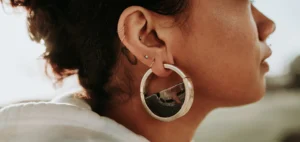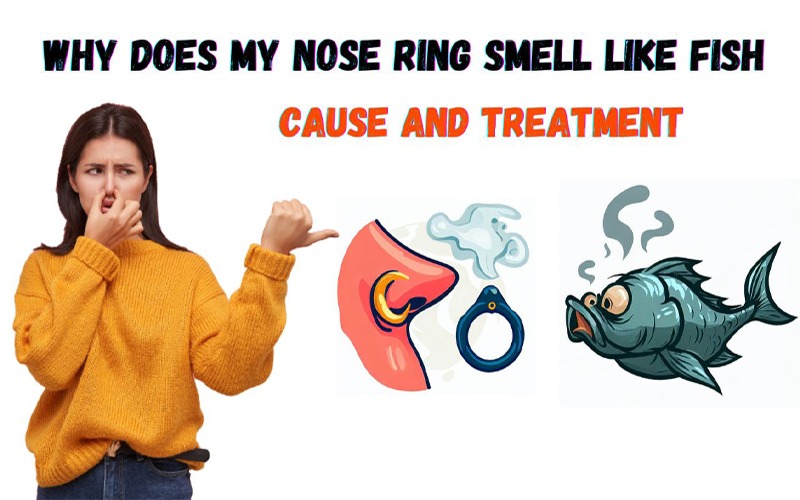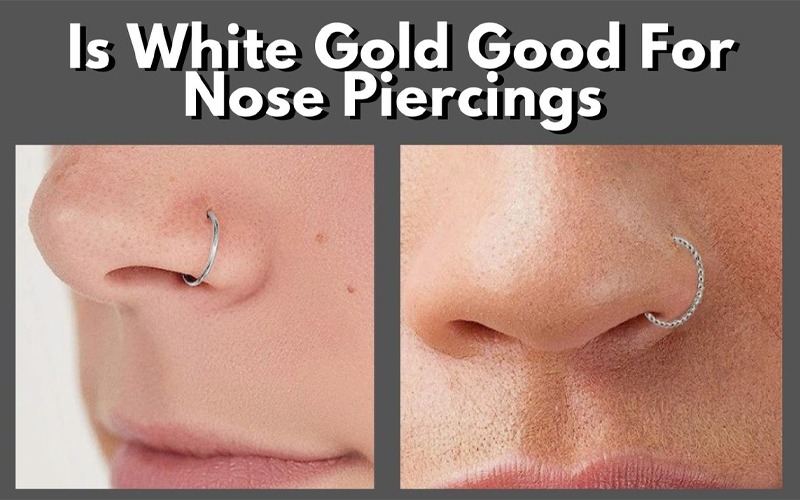Helix piercing is a type of ear piercing that has become increasingly popular in recent years. It involves piercing the upper cartilage of the ear, creating a hole for jewelry to be inserted. Some people opt for a single helix piercing, while others choose to have multiple piercings in a row, creating a unique and stylish look.
One of the reasons helix piercings have become so popular is because they are relatively easy to care for and maintain. Unlike other types of piercings, such as belly button or tongue piercings, helix piercings do not require extensive aftercare. However, you must keep the piercing clean and avoid touching it with dirty hands to prevent infection.
What Is a Helix Piercing?
A helix piercing is a type of ear piercing that involves perforating the helix, which is the upper cartilage of the ear. It is a popular form of body modification that has been around for centuries and has become increasingly popular in recent years.
The helix piercing is typically done with a needle, although some people may opt for a piercing gun. It is important to note that piercing guns are not recommended for helix piercings, as they can cause damage to the cartilage and increase the risk of infection.
After the piercing is done, a small piece of jewelry is inserted into the hole. This can be a stud, hoop, or other type of earring. You must choose jewelry made of high-quality materials, such as surgical steel or titanium, to reduce the risk of irritation or infection.
Healing time for a helix piercing can vary depending on the individual and the aftercare routine. Generally, it takes around 4-6 months for the piercing to fully heal. During this time, make sure to keep the piercing clean and avoid sleeping on the pierced ear.

Types of Helix Piercings
When it comes to helix piercings, there are several types to choose from. Each type has its own unique placement and aesthetic, allowing for a personalized look. Here are a few of the most popular types of helix piercings:
Standard Helix Piercing
The standard helix piercing is the most common type of helix piercing. It is placed on the outer rim of the ear, known as the helix. This piercing is typically done with a small gauge needle and can be adorned with a variety of jewelry such as studs, hoops, and captive bead rings. It is a versatile piercing that can be customized to fit any style.
Forward Helix Piercing
The forward helix piercing is a more unique placement that is done on the front of the ear, just above the tragus. This piercing is typically done with a small gauge needle and can be adorned with studs or small hoops. It is a great option for those who want a more subtle piercing that is still visible.
Double and Triple Helix Piercings
Double and triple helix piercings are a great way to add some edge to your look. These piercings involve multiple piercings done on the helix, either in a row or stacked on top of each other. They can be adorned with a variety of jewelry and are a great way to create a unique and personalized look.
Procedure of Helix Piercing
Pre-Piercing Consultation
Before getting a helix piercing, you need to schedule a consultation with a professional piercer. During this consultation, the piercer will discuss the piercing process, the risks involved, and answer any questions you may have. The piercer will also assess your ear anatomy to ensure that a helix piercing is a suitable option.
Piercing Process
The piercing process for a helix piercing typically involves the following steps:
- Cleaning the ear: The piercer will clean the ear with an antiseptic solution to minimize the risk of infection.
- Marking the piercing location: The piercer will use a sterile pen to mark the location where the piercing will be placed.
- Piercing the ear: The piercer will use a sterilized needle to create the piercing.
- Inserting the jewelry: Once the piercing is complete, the piercer will insert the jewelry into the piercing.
Aftercare Instructions
After getting a helix piercing, you need to follow proper aftercare instructions to minimize the risk of infection and promote healing. The following aftercare instructions are typically recommended:
- Cleaning the piercing: Clean the piercing twice a day with a saline solution or an antiseptic solution recommended by the piercer.
- Avoiding irritants: Avoid touching the piercing or exposing it to irritants such as hair products or makeup.
- Avoiding trauma: Avoid sleeping on the pierced ear or engaging in activities that may cause trauma to the piercing.
- Monitoring for signs of infection: Monitor the piercing for signs of infection, such as redness, swelling, or discharge.
Potential Risks and Complications
Helix piercing, like any other piercing, carries some potential risks and complications. It is important to be aware of these risks before getting a helix piercing.
Infection
One of the most common risks associated with helix piercing is infection. Bacteria can easily enter the wound during the piercing process or aftercare, leading to an infection. Signs of infection include redness, swelling, and discharge. If left untreated, the infection can lead to more serious complications.
To prevent infection, you need to choose a reputable piercer who uses sterile equipment and follows proper hygiene practices. After the piercing, make sure to follow the aftercare instructions provided by the piercer to keep the piercing clean and avoid infection.
Jewelry Rejection
Jewelry rejection is another potential risk associated with helix piercing. This happens when the body recognizes the jewelry as a foreign object and tries to push it out of the skin. Signs of jewelry rejection include redness, swelling, and a visible gap between the jewelry and the skin.
To prevent jewelry rejection, make sure to choose high-quality jewelry made of materials that are less likely to cause a reaction, such as titanium or gold. You should also avoid touching the piercing excessively and sleeping on the side of the piercing.
Piercing Migration
Piercing migration is the movement of the piercing from its original placement. This can happen due to the body’s natural healing process or due to trauma to the piercing. Signs of piercing migration include a visible shift in the location of the piercing and discomfort.
To prevent piercing migration, you should choose a piercer who has experience with helix piercings and can accurately place the piercing. You should also avoid excessive movement or trauma to the piercing during the healing process.
Choosing the Right Jewelry
When it comes to helix piercings, choosing the right jewelry is crucial for both comfort and style. Here are some factors to consider when selecting the perfect piece for your helix piercing.
Material Considerations
The material of the jewelry is an essential aspect to consider when choosing the right jewelry for your helix piercing. Opting for high-quality materials is critical to avoid allergic reactions or infections. Some of the most popular materials for helix piercings include:
- Surgical steel
- Titanium
- Gold
- Niobium
Each of these materials has its unique characteristics, and you need to choose the one that suits your skin type and personal preferences.
Jewelry Styles
The style of the jewelry is another crucial factor to consider when selecting the right jewelry for your helix piercing. Helix piercings offer a wide variety of jewelry styles, including:
- Hoops
- Studs
- Barbells
- Captive bead rings
Each of these styles has its unique look and feel, and it is essential to choose the one that fits your personal style and comfort level.
Size and Gauge
The size and gauge of the jewelry are also critical factors to consider when selecting the right jewelry for your helix piercing. The size of the jewelry will depend on the location of your helix piercing and the style you choose. The gauge of the jewelry refers to the thickness of the jewelry and can range from 20 to 16 gauge for helix piercings.
Healing and Aftercare
Cleaning and Maintenance
Proper cleaning and maintenance of a helix piercing is crucial to ensure proper healing. It is recommended to clean the piercing twice a day with saline solution or a mild soap and warm water. Make sure to avoid using harsh chemicals or alcohol-based products as they can irritate the piercing. After cleaning, gently pat the area dry with a clean towel or tissue.
What to Avoid
During the healing process, you need to avoid touching the piercing with dirty hands or allowing others to touch it. It is also important to avoid sleeping on the side of the piercing or wearing hats or headphones that may put pressure on the area. Swimming or submerging the piercing in water should be avoided until it is fully healed.
Signs of Healing
Signs of healing include reduced redness, swelling, and tenderness around the piercing. A small amount of discharge is normal during the healing process, but excessive discharge or pus may indicate an infection. If there is any sign of infection, such as increased pain or redness, make sure to seek medical attention.
Troubleshooting Common Issues
Swelling and Redness
Swelling and redness are common issues that can occur after getting a helix piercing. This is normal and usually goes away on its own within a few days to a week. However, if the swelling and redness persist or get worse, it may indicate an infection. To reduce swelling and redness, you can use a cold compress and avoid touching or sleeping on the piercing. Make sure to avoid using alcohol or peroxide on the piercing as it can cause irritation and delay the healing process.
Pain Management
Pain is another common issue that can occur after getting a helix piercing. You can take over-the-counter pain relievers such as ibuprofen or acetaminophen as directed to manage the pain. Make sure to avoid aspirin as it can increase the risk of bleeding. You can also try using a warm compress to reduce pain and promote healing.
When to Seek Medical Attention
In some cases, complications can occur after getting a helix piercing. If the person experiences severe pain, excessive bleeding, discharge, or fever, it may indicate an infection or other complication. Seek medical attention immediately if any of these symptoms occur. The person should not remove the jewelry as it can cause the piercing to close and trap the infection inside.
It is important to take proper care of a helix piercing to avoid complications. The person should clean the piercing regularly with saline solution and avoid touching or sleeping on the piercing. If any issues arise, seek medical attention promptly to prevent further complications.
Personalizing Your Helix Piercing
When it comes to helix piercings, there are many ways to make them unique and personalized. Here are some ideas to help you get started:
Customization Ideas
- Jewelry: One of the easiest ways to personalize your helix piercing is by choosing jewelry that reflects your personal style. There are many different types of jewelry available, from simple studs to elaborate hoops and dangles. You can also choose from a variety of materials, such as gold, silver, and titanium, to create the perfect look.
- Placement: The placement of your helix piercing can also be customized to suit your preferences. Some people prefer to have their piercing closer to the top of the ear, while others prefer it closer to the bottom. You can also choose to have multiple helix piercings in a row, or even a helix piercing that wraps around the ear.
- Color: If you have a colorful personality, you may want to consider adding some color to your helix piercing. You can choose from a variety of colored gems and stones to create a unique and eye-catching look.
Trending Accessories
- Ear Cuffs: Ear cuffs are a popular accessory that can be worn with a helix piercing. They come in a variety of styles and designs. Some are simple and elegant, while others are bold and edgy.
- Chains: Chains are another trendy accessory that can be worn with a helix piercing. They can be attached to the jewelry in your piercing, or worn as a separate piece.
- Charms: Charms are a fun and playful way to customize your helix piercing. You can choose from a variety of charms, such as animals, flowers, and symbols, to create a look that is uniquely yours.





